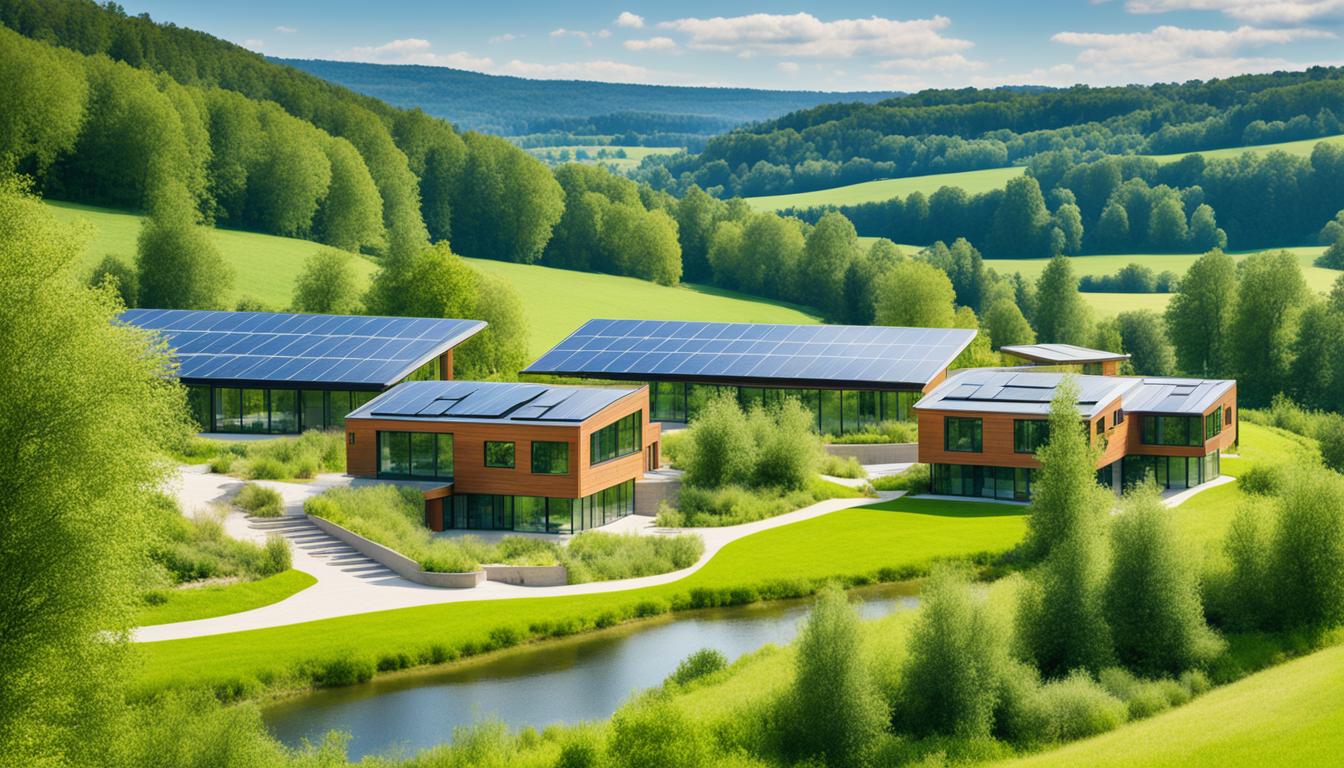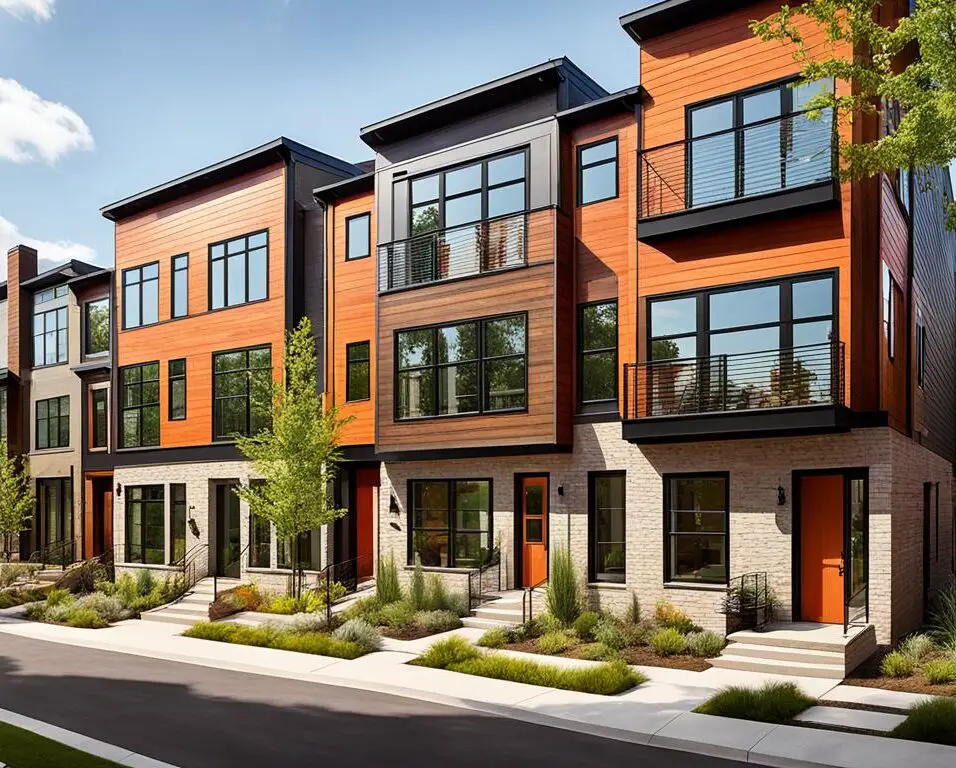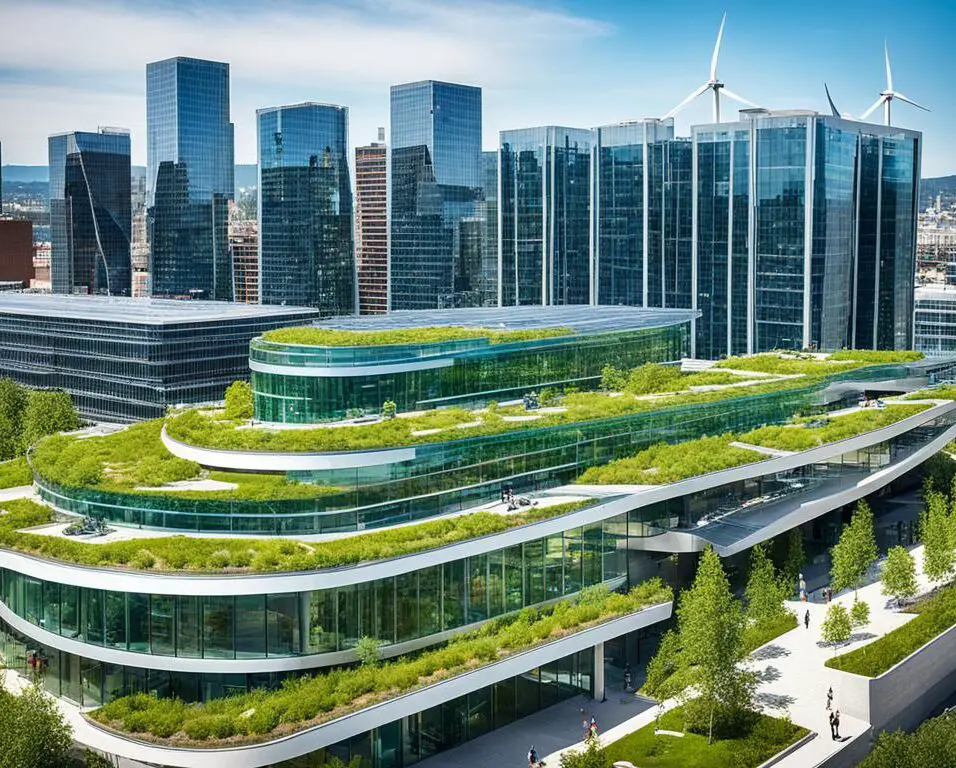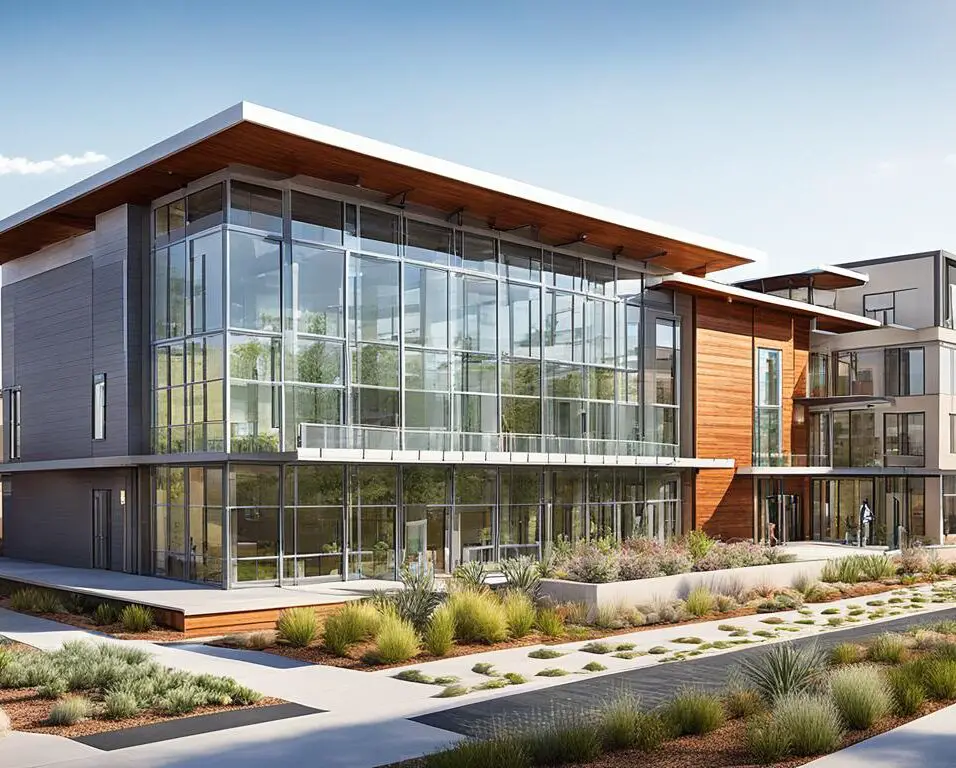Embracing Rural Development Architecture for Sustainable Living
Rural development architecture plays a vital role in revitalizing and sustaining our countryside, promoting economic growth, social inclusion, and environmental protection. With innovative design solutions, this approach aims to create sustainable communities that thrive in harmony with nature. Let’s explore the importance and benefits of rural development architecture.
Key Takeaways:
- Rural development architecture is essential for promoting economic growth, social inclusion, and environmental protection in rural areas.
- It creates opportunities for job creation, poverty reduction, and sustainable businesses.
- Rural development architecture fosters social inclusion and community engagement, empowering residents to shape their environment.
- It prioritizes environmental sustainability through green building design, renewable energy integration, and ecological restoration.
- Rural development architecture offers a sustainable pathway for creating thriving rural communities.
The Role of Rural Development Architecture in Economic Growth
Through rural development architecture, we can stimulate economic growth in rural areas. By investing in infrastructure, promoting entrepreneurship, and supporting local industries, this approach creates opportunities for job creation and poverty reduction. It encourages the establishment of sustainable businesses that contribute to the local economy and strengthens the resilience of rural communities.
“Rural development architecture plays a crucial role in promoting economic growth in rural areas. By designing infrastructure that supports local industries and entrepreneurial activities, we can create thriving communities that benefit both the residents and the economy as a whole.” – Jane Anderson, Architect
Investing in Infrastructure
One of the key aspects of rural development architecture is the investment in infrastructure. This includes the construction of roads, bridges, schools, healthcare facilities, and other essential amenities. By improving the accessibility of rural areas, it becomes easier for businesses to operate and attract investments. Additionally, enhanced infrastructure enables the transportation of goods and services, opening up market opportunities for local entrepreneurs.
Promoting Entrepreneurship
Rural development architecture also focuses on promoting entrepreneurship. By providing suitable spaces and facilities for startups and small businesses, rural communities can foster innovation and create jobs locally. This not only reduces unemployment but also encourages individuals to stay in their rural hometowns, preventing urban migration and preserving the cultural fabric and traditions of rural areas.
Supporting Local Industries
In order to achieve sustainable economic growth, rural development architecture supports and strengthens local industries. Whether it’s agriculture, manufacturing, tourism, or crafts, the architectural design and planning take into consideration the specific needs and characteristics of the local industries. This support can include providing infrastructure for production, storage, and marketing, as well as creating spaces for showcasing and promoting local products and culture.
Comparison of Economic Growth Factors in Rural Development Architecture
| Factors | Rural Development Architecture | Traditional Development Approaches |
|---|---|---|
| Investment in infrastructure | ✓ | ✗ |
| Promotion of entrepreneurship | ✓ | ✗ |
| Support for local industries | ✓ | ✗ |
| Job creation | ✓ | ✗ |
| Poverty reduction | ✓ | ✗ |
The comparison table above highlights the significant advantages of rural development architecture in driving economic growth compared to traditional development approaches. By adopting an architectural approach that focuses on the unique needs and potential of rural areas, we can create sustainable communities that thrive economically, socially, and environmentally.
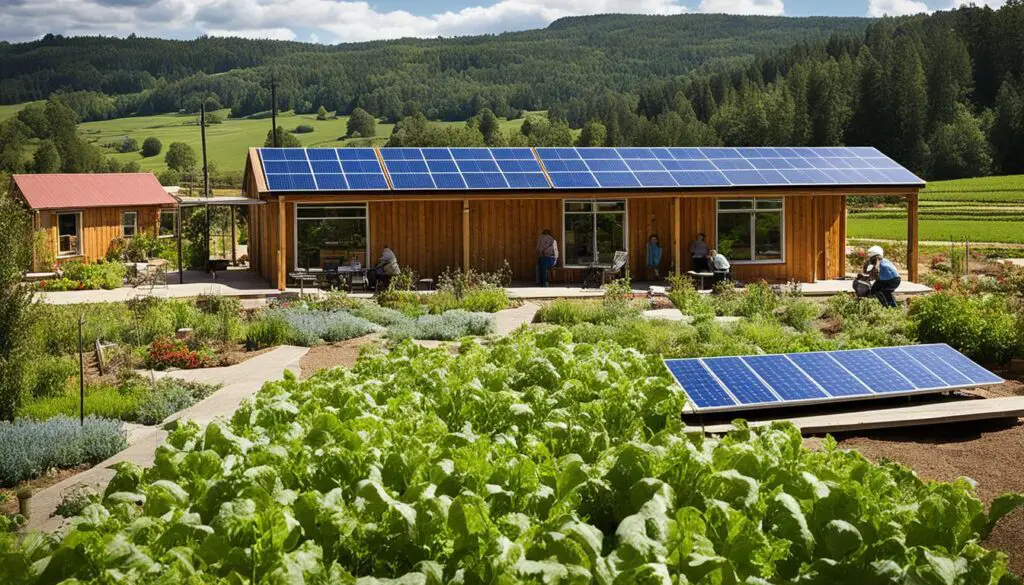
Social Inclusion and Community Engagement in Rural Development Architecture
Rural development architecture plays a significant role in fostering social inclusion by promoting community engagement and participatory design processes. This approach recognizes the importance of involving local residents in decision-making and empowering them to shape their environment.
By integrating local cultures, traditions, and needs into the planning and implementation of projects, rural development architecture creates spaces that reflect the unique identity of the community. This inclusive approach enhances social cohesion, promotes a sense of belonging, and ultimately improves the overall quality of life in rural areas.
Empowering Communities Through Participation
Community engagement lies at the heart of rural development architecture. By involving residents, architects, and other stakeholders in the design process, collective input and expertise can be harnessed to create innovative solutions that address the specific needs and aspirations of the community.
Rural development architecture democratizes the design process, ensuring that decisions are made collectively, with an emphasis on inclusivity and social equity.
Engaging the community not only empowers individuals but also builds a sense of ownership and responsibility for the development project. This collaborative approach fosters a stronger connection between residents and their surroundings, leading to sustainable, well-maintained spaces that meet the needs of the community.
Promoting Social Cohesion and Sense of Belonging
Rural development architecture recognizes the importance of creating spaces that facilitate social interaction, bridging the gap between different segments of the community. By designing communal areas, such as parks, recreational centers, and public squares, rural development architecture encourages social connections and strengthens social ties.
These shared spaces serve as catalysts for community events, cultural activities, and gatherings. By nurturing an environment that fosters social cohesion, rural development architecture helps to combat social isolation and promotes a sense of belonging among residents.
Improving Quality of Life in Rural Areas
Rural communities often face unique challenges, such as limited access to resources and services. Rural development architecture addresses these challenges by incorporating solutions that meet the specific needs of the community. For example, incorporating healthcare facilities, educational institutions, and sustainable infrastructure can significantly improve the quality of life in rural areas.
Through targeted interventions, rural development architecture helps create vibrant, self-sufficient communities that thrive in harmony with their surroundings. By enhancing the livability of rural areas, this approach contributes to a more sustainable and equitable society.
| Benefits of Social Inclusion and Community Engagement in Rural Development Architecture |
|---|
| 1. Increased community empowerment and ownership of development projects. |
| 2. Strengthened social ties and improved social cohesion. |
| 3. Enhanced quality of life through the provision of essential services. |
| 4. Preservation and celebration of local cultures and traditions. |
| 5. Promotion of sustainable and well-maintained community spaces. |
Environmental Sustainability in Rural Development Architecture
Environmental sustainability is a fundamental principle of rural development architecture. It encompasses a range of strategies and practices aimed at minimizing the environmental impact of development activities and ensuring the long-term protection of natural resources. By integrating green building design, renewable energy solutions, and ecological restoration, rural development architecture promotes a sustainable and resilient future for our rural areas.
One of the key aspects of environmental sustainability in rural development architecture is the implementation of green building design. This approach emphasizes energy efficiency, the use of sustainable materials, and the incorporation of passive design strategies to minimize the ecological footprint of buildings. Green buildings not only reduce energy consumption and greenhouse gas emissions but also create healthier and more comfortable living environments for residents.
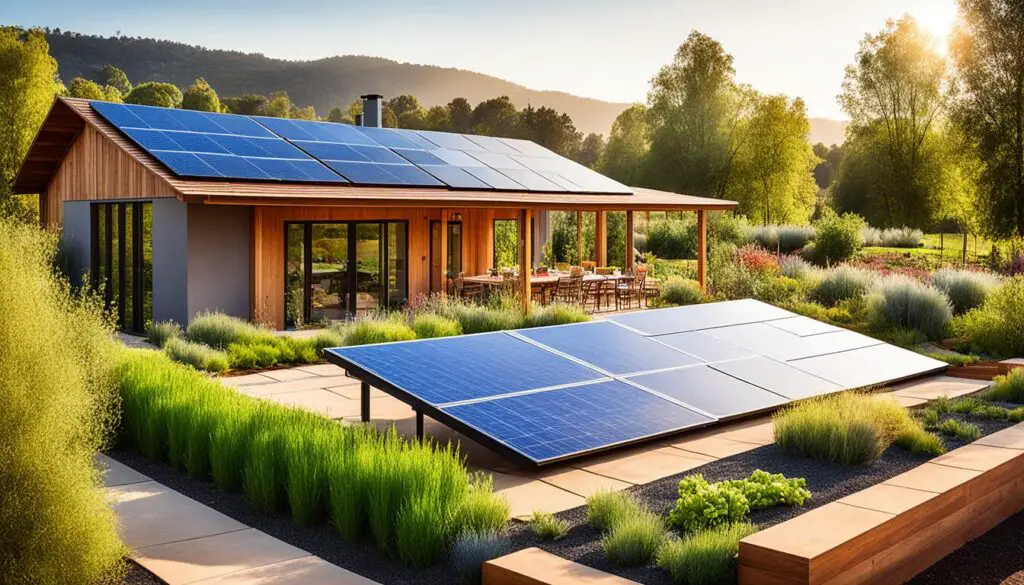
Renewable energy integration
Another crucial element of environmental sustainability in rural development architecture is the integration of renewable energy sources. This includes the use of solar panels, wind turbines, and other clean energy technologies to power homes, businesses, and community facilities. By reducing reliance on fossil fuels and promoting the adoption of sustainable energy alternatives, rural areas can become more self-reliant, mitigate climate change, and contribute to the development of a low-carbon economy.
“The integration of renewable energy sources in rural development architecture not only reduces greenhouse gas emissions but also creates economic opportunities, such as job creation and local energy production.” – Jane Thompson, Sustainable Architecture Expert
Furthermore, rural development architecture prioritizes ecological restoration to protect and restore natural habitats and biodiversity. By incorporating green spaces, wildlife corridors, and sustainable land management practices, rural areas can support healthy ecosystems and preserve local flora and fauna. This not only enhances the beauty and uniqueness of the countryside but also provides recreational opportunities and improves the overall well-being of residents.
Sustainable land management
Table: Benefits of Environmental Sustainability in Rural Development Architecture
| Benefits | Description |
|---|---|
| Reduced carbon footprint | Integration of green building design and renewable energy technologies helps reduce greenhouse gas emissions. |
| Conservation of natural resources | Efficient use of water, preservation of biodiversity, and sustainable land management contribute to the protection of natural resources. |
| Enhanced resilience to climate change | Implementation of climate-adaptive design strategies and ecological restoration measures strengthens resilience to climate-related risks. |
| Promotion of healthier living environments | Integration of green spaces, improved air quality, and access to nature positively impact the well-being of residents. |
In conclusion, environmental sustainability lies at the heart of rural development architecture. By prioritizing green building design, renewable energy integration, and ecological restoration, this approach ensures the long-term viability and resilience of our rural areas. It not only reduces the environmental impact of development but also creates healthier, more sustainable communities. Through the collective effort and commitment to sustainable practices, we can create a future where rural areas thrive in harmony with nature.
Embracing a Sustainable Future with Rural Development Architecture
Rural development architecture offers a promising pathway to a sustainable future. Through innovative design solutions, prioritizing economic growth, social inclusion, and environmental sustainability, we can create thriving rural communities that serve as models of sustainable living.
By integrating sustainable practices into every aspect of our rural development projects, we can ensure that our countryside evolves into a vibrant and resilient landscape. From energy-efficient buildings to green infrastructure and regenerative agriculture, rural development architecture contributes to the well-being of both people and the planet.
Embracing this approach requires collective efforts and collaboration between stakeholders, including architects, urban planners, policymakers, and local communities. By working together, we can prioritize the principles of sustainable development in our rural areas, allowing us to build a prosperous and resilient future for generations to come.



